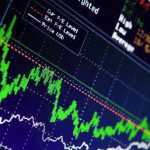Being a true contrarian investor isn’t just about investing in unloved sectors of the market or specific stocks. It’s also about conducting research and discovering indicators that the crowd doesn’t follow — indicators that can help give clues as to the next probable direction of risk assets. I’m always on the lookout for such indicators, and have compiled many of them over my years of trading and investing. [Here’s just one that bares scrutiny. Take a look.] Words: 610
sectors of the market or specific stocks. It’s also about conducting research and discovering indicators that the crowd doesn’t follow — indicators that can help give clues as to the next probable direction of risk assets. I’m always on the lookout for such indicators, and have compiled many of them over my years of trading and investing. [Here’s just one that bares scrutiny. Take a look.] Words: 610
So says Tom Essaye (www.moneyandmarkets.com) in edited excerpts from his original article*.
Lorimer Wilson, editor of www.munKNEE.com (Your Key to Making Money!), has edited the article below for length and clarity – see Editor’s Note at the bottom of the page. This paragraph must be included in any article re-posting to avoid copyright infringement.
Essaye goes on to say, in part:
The crowd, for example, often looks at the U.S. dollar as an indicator of risk sentiment for the markets and, to be sure, it is. Generally, when the dollar goes up, it means investors are seeking the safety of assets like Treasuries and, when it falls, investors are moving to riskier assets such as stocks and commodities. If you are looking to become a savvy contrarian investor, however, there is another “dollar” that can often be a leading indicator of risk appetite across the globe. I’m talking about …
The Aussie – A Pretty Reliable Indicator for Global Risk Appetite
Over the past several years, the Australian dollar has become a pretty reliable indicator for global risk appetite. The reason: Australia’s economy is heavily reliant on exporting its industrial commodities, including iron ore, coal, nickel, and uranium. As a result, the Aussie economy:
- grows when the global economy (and in particular China) is growing and it
- shrinks when global economic activity is declining.
Like many other nations, Australia’s dollar rallies and falls with the economy. When the economy gets stronger, the Australian dollar rises as markets anticipate rising interest rates in the country to combat inflation — and when the economy stalls the markets anticipate interest rate cuts to stimulate growth.
We can see the predictive power of the Aussie dollar in the chart below. It peaked in early March, way ahead of the stock market and before the commodity markets broke down. Even more recently, it put in a bottom before the stock and commodity markets rallied.

It’s important to note, then, that the Australian dollar is now running into resistance at the downtrend line that dates back to the March top. Contrarian investors know to watch this closely.
- If it breaks through that downtrend, it could be a leading indicator that risk assets like stocks and commodities may be getting ready to turn higher.
- Likewise, if the Australian dollar fails here, it’ll be a sign that the weakness we’ve seen in stocks and commodities is probably going to continue for a while longer.
How to Put This Indicator to Work for You
Now, I’m not saying that the Aussie dollar is the absolute predictor of stock market direction but it is a less followed indicator for risk assets generally, and it is monitored by savvy, contrarian investors….
Conclusion
Being a true contrarian investor involves more than just buying out of favor stocks or sectors. It also takes looking beyond the mass-followed indicators to find ones that are less followed – and that’s where you’ll find the next probable move for stocks and other assets.
*http://www.moneyandmarkets.com/this-leading-indicator-works-for-me-now-put-it-to-work-for-you-49876 (To access the above article please copy the URL and paste it into your browser.)
Editor’s Note: The above article may have been edited ([ ]), abridged (…), and reformatted (including the title, some sub-titles and bold/italics emphases) for the sake of clarity and brevity to ensure a fast and easy read. The article’s views and conclusions are unaltered and no personal comments have been included to maintain the integrity of the original article.
Related Articles:
Martin Armstrong provides a remarkable explanation of what is going on right now with the U.S. dollar, bond yields and the current price of gold. It would be well worth your time to read and reflect on what he has to say. Words: 822
2. Bonds Are NOT a Safe Place to Be – Here’s Why
For those who think bonds are a safe place to be, you might want to reconsider. In addition to rising sovereign risk (yes, for the U.S. as well as other countries), there is interest rate risk….[should you not] hold it to maturity. If interest rates rise, then the value of your bond falls (Bonds can produce capital gains/losses, just like stocks.) and the possibility of interest rates rising is pretty good. Words: 530
3. With Options So Limited Where Should We Invest?
The fear factor among investors is high with investors unsure just where to put their money. Let’s review the options and come to a conclusion as to where best to invest our cash at this point in time. Words: 402
4. This New ‘Peak Fear’ Indicator Gives You an Investment Edge
We are at a major crossroads in the equity and bond markets. We could see a major ‘risk-on’ rally in the S&P 500 BUT if no equity rally ensues, and U.S. Treasury note yields keep falling, then something terrible is about to strike at the heart of the global capital markets…. [As such, it is imperative that you keep a close eye on this new ‘Peak Price’ indicator. Let me explain.] Words: 450
 munKNEE.com Your Key to Making Money
munKNEE.com Your Key to Making Money



